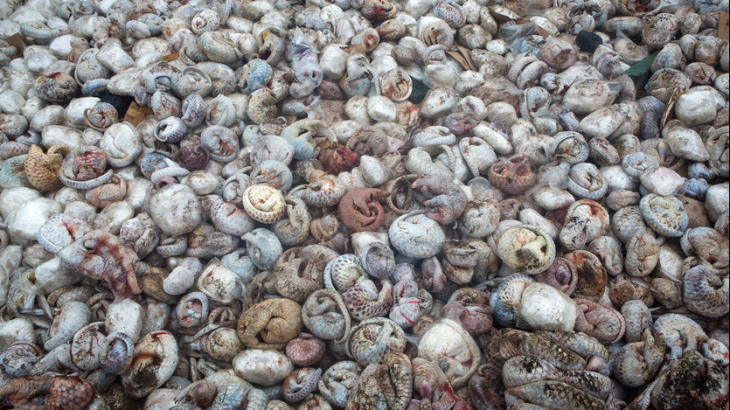Can an award-winning photograph save a species from extinction?
Sunitha Chari, Biology & Life Sciences co-editor
“Nothing prepared Paul for what he saw or smelled.” These words introduce The Pangolin Pit, the photo that won first place in the Single Image category for photojournalism, at the 2016 Wildlife Photographer of the Year (WPY) competition.
This image, taken in Medan, Indonesia, records one the the largest seizures of illegally trafficked pangolins anywhere in the world. Elaborating on his reaction to the scene in an interview with The Huffington Post, photographer Paul Hilton stated, “I stood there for a while and I couldn’t even take a photograph. It was the early morning, a very stark landscape with just a few police officers. And I’m just standing there looking into this pit thinking, ‘What an absolute disgrace.’”
Paul is an award-wining fellow of the International League of Conservation Photographers, and has made a career documenting important issues surrounding the environment and wildlife trafficking . The Pangolin Pit is in keeping with the timbre of his work: intense, visceral and riveting. It has raised the profile of this shy, gentle, nocturnal animal, the only mammal with scales, and the reasons it is being hunted so extensively.
“I stood there for a while and I couldn’t even take a photograph…” – Paul Hilton
There are eight species of pangolin: four are native to Asia and four to Africa. All eight are listed in the International Union for Conservation of Nature’s (IUCN) Red List of endangered species. Two of the Asian pangolin species, the Sunda pangolin and Chinese pangolin, are listed as critically endangered. The other two are listed as endangered. All four African species are listed as vulnerable. The Convention on International Trade in Endangered Species (CITES) reports prepared by the IUCN Species Survival Commission Pangolin Specialist Group indicate that over 1 million pangolins have been killed since 2000.
Traditionally, pangolins have been used as African bush meat and their meat is also consumed as a delicacy in China and Vietnam. Pangolin scales are used in traditional medicine in these countries. There are claims that the scales improve circulation and lactation, bring down swelling, and expel pus. Despite there being no scientific data to substantiate any medical benefits, there is a widespread demand and, with a burgeoning Chinese economy, this demand has increased, pushing Asian pangolins to the precipice of extinction while simultaneously targeting the African population. The indiscriminate poaching of pangolins has led to a dramatic decline in their numbers worldwide. Yet the world has remained largely oblivious to their plight.
A powerful photograph like The Pangolin Pit gives wildlife a voice by confronting the observer with the stark reality of these animals’ precarious situation.
Pangolins, like vaquita porpoises, sea horses and sea cucumbers, have not enjoyed the coverage their more iconic wildlife counterparts like tigers, rhinos and elephants have received. But this doesn’t change the fact that their desperate situation needs to be addressed, and the important role that photojournalism plays in revealing the plight of these animals cannot be understated.
A powerful photograph like The Pangolin Pit gives wildlife a voice by confronting the observer with the stark reality of these animals’ precarious situation. It helps them grapple with an esoteric, intellectual topic and makes an abstraction tangible, which is essential in facilitating the dialogue around conservation.
Because of such educational outreach efforts, the international community has finally decided to act. In its latest meeting, CITES decided to move all eight species of pangolins to the Appendix 1 category, effectively banning all trade and trafficking of these animals.
Yet more needs to be done. Paul Hilton says it best: “It is going to take much more than just Appendix 1 to save them. It’s going to need a seismic shift in demand, and a global refusal to watch yet another of our precious species vanish from our planet.” And his message for achieving this goal is equally clear: only when the demand stops will wildlife crimes end.
Since wildlife crime is a complex issue, it requires long-term solutions. And like all complex issues, it requires a good understanding of the problem. As Baba Dioum, the Senegalese conservationist, said, “In the end we will conserve only what we love; we will love only what we understand; and we will understand only what we are taught.” Photographs like The Pangolin Pit are an important means of communication, educating us about the world around us and helping us make better informed choices. And the pangolin’s hope for survival depends on our awareness of its plight, and the choices we make.
*Header image: The Pangolin Pit, by Paul Hilton. Used with permission.




